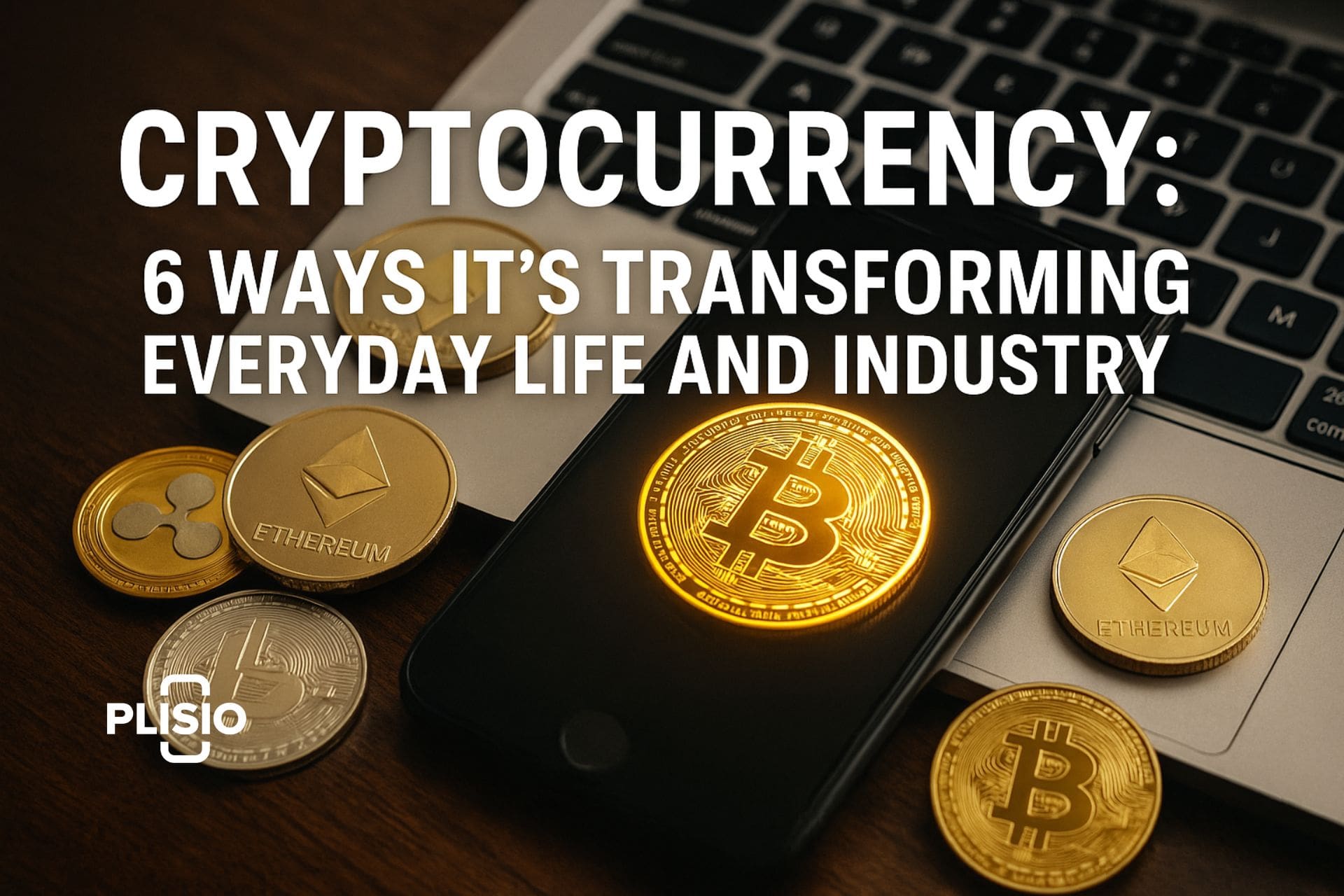Cryptocurrency: 6 Ways It’s Transforming Everyday Life and Industry

Cryptocurrency is no longer just a playground for speculators. Built on blockchain, it delivers transparency, security, and decentralization, offering possibilities that traditional finance often fails to provide. By 2025, the crypto market has swelled past $3 trillion, with more than 600 million people worldwide actively using digital wallets — proof that crypto is weaving itself into the fabric of modern life.
“We’re seeing a paradigm shift,” says Dr. Hannah Liu, fintech researcher at MIT. “Cryptocurrencies aren’t fringe anymore. They’re becoming part of everyday commerce and culture.”
Betting on Esports
Esports has become one of the most visible frontiers for crypto adoption. Fans of League of Legends (LoL) can now place bets directly in digital currencies, skipping the delays and fees of traditional payments. By 2025, the esports betting market hit $25 billion, with nearly 15% of bets placed in crypto. Given LoL’s global reach, the marriage of gaming and digital money feels almost inevitable.
“Esports fans are digital-first,” explains Marco Reyes, head of innovation at an esports betting firm. “Using crypto is second nature to them, which explains how quickly this trend has taken off.”
A Global Payment Option
Perhaps the most obvious use for crypto is payments. Bitcoin, Ethereum, and other major coins make it possible to send money across borders without banks or card networks. The result: lower costs and faster settlements. As of 2025, more than 40% of online retailers worldwide accept some form of cryptocurrency, while PayPal says about one in five of its international transactions now involve digital assets.
“For merchants, crypto isn’t a gimmick — it’s a gateway to global customers,” notes Sarah Novak, payments analyst at Deloitte. “Lower fees are just an added bonus.”
Reinventing Remittances
Cross-border remittances have long been slow and expensive, but crypto is changing the game. Transfers that once took days can now be completed in minutes without middlemen. In 2025, crypto-powered remittances totaled $80 billion, a huge savings for migrant workers who rely on sending money home. In countries like the Philippines, this has already become part of daily financial life.
“For millions of families, lower transfer fees translate into food, education, and healthcare,” says Ramon Villanueva, economist at the Asian Development Bank. “Crypto remittances aren’t just financial innovation — they’re social progress.”
Expanding Investment Opportunities
Digital assets are no longer a novelty investment. With the approval of Bitcoin ETFs and more regulatory clarity, crypto is carving out a permanent spot alongside stocks and bonds. In 2025, more than 20% of institutional investors hold digital assets, while staking platforms manage over $300 billion in locked value.
“Institutional money changed the landscape,” says Laura Kim, strategist at a digital asset fund. “When pension funds enter the space, volatility drops and credibility rises.”
Gaming and Esports Integration
Gaming has embraced crypto faster than most industries. Players use digital assets to buy skins, recharge in-game credits, and even wager on esports matches. In 2025 alone, $15 billion worth of in-game transactions were made with crypto. Games like LoL are at the center of this shift, blending entertainment with blockchain-based economies.
“Players don’t just want fun anymore; they want ownership,” says Jacob Tran, CEO of a blockchain gaming studio. “Crypto lets them build real value in digital worlds.”
Digital Content and NFTs
NFTs — blockchain tokens that prove digital ownership — have turned art, music, and even memes into tradeable assets. Though the hype has cooled, the NFT market still brought in $20 billion in 2025. For creators, this isn’t just about profit; it’s about control and independence.
“NFTs flipped the script on digital ownership,” says Alicia Morgan, art market consultant. “For creators, the blockchain offers freedom that galleries and record labels rarely allow.”
Charitable Giving
Nonprofits are also leaning into crypto. Blockchain allows donors to see exactly where their money goes, fostering trust and accountability. In 2025, crypto donations exceeded $10 billion worldwide, providing rapid relief in war zones and disaster-hit regions.
“Speed is everything in emergencies,” says Martin Osei, director of a global NGO. “Blockchain lets us move money where it’s needed in real time.”
Pros and Cons of Cryptocurrency
Pros:
- Lower fees and faster payments across borders.
- Transparency and security through blockchain.
- New avenues for investment and passive income.
- Greater power for creators through NFTs.
- Expands access to financial tools in underserved regions.
Cons:
- Price volatility makes it risky for short-term use.
- Unclear and inconsistent regulation globally.
- Potential misuse in illicit markets.
- Environmental concerns tied to energy-heavy networks.
- Steep learning curve for non-technical users.
Cryptocurrency is no longer just “digital cash.” It has become a disruptive force in finance, culture, and technology. From remittances to gaming, from donations to investments, crypto is reshaping how money and value flow across the globe. And with adoption growing year after year, its role in the world economy is only getting stronger.

